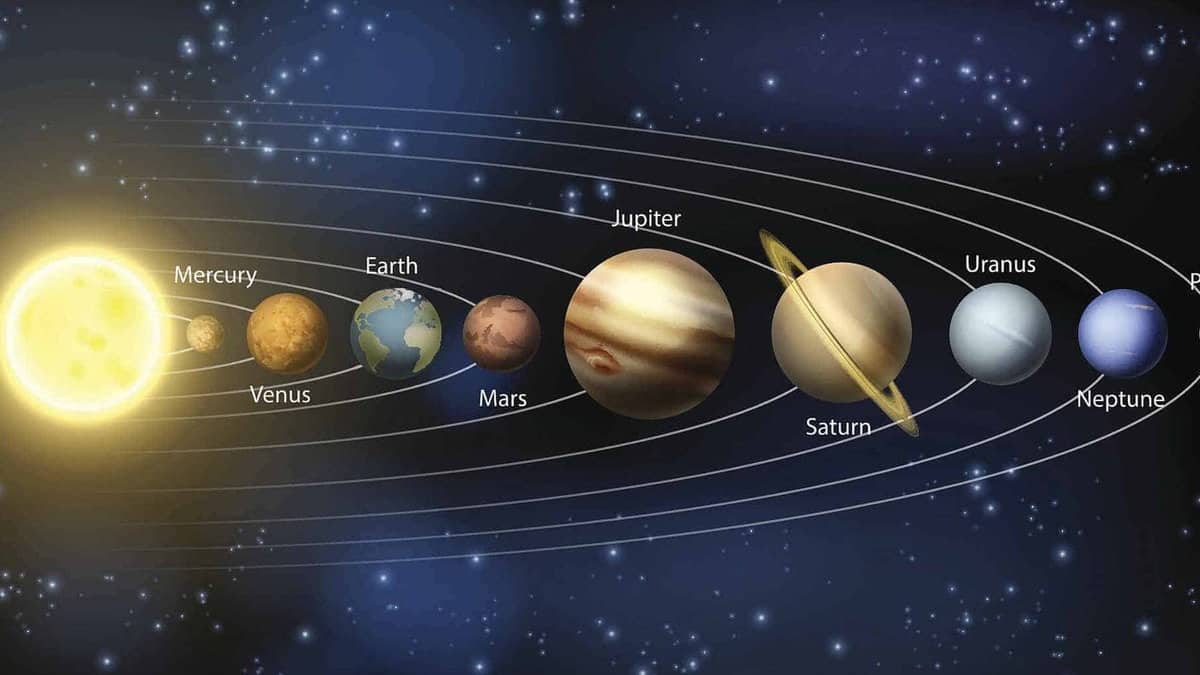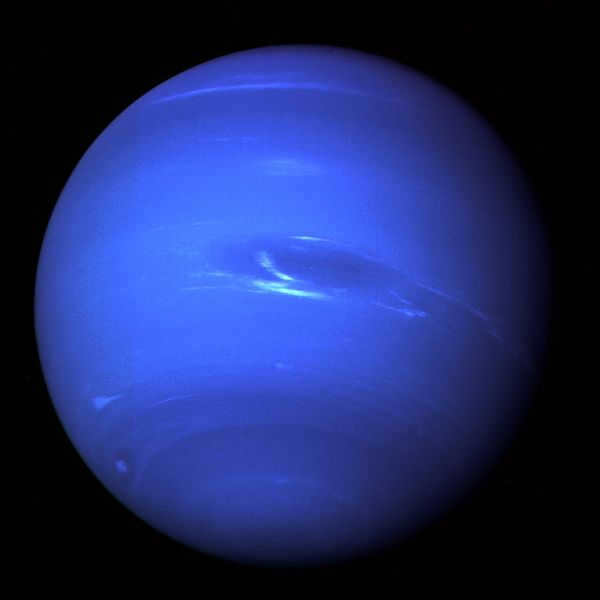
Despite Neptune’s lack of distinction in terms of size among the planets, its mass surpasses that of Uranus. Observing Neptune can be quite challenging, as it typically appears as a small disk and requires a telescope or even binoculars for a closer look. The planet’s ring is not visible from Earth, and only the Voyager-2 space satellite has had the privilege of reaching this distant world. To this day, no other spacecraft has achieved the same level of success.
General information
Neptune is situated approximately 30 astronomical units away from the Sun, and its diameter measures around 50,000 kilometers. To put it differently, this celestial body has a mass equivalent to that of 17 Earths! The time it takes for Neptune to complete one orbit around the Sun is nearly 165 years, and its average temperature is approximately 55 Kelvin.
According to ancient legends, Neptune acquired its name due to its distinct blue coloration. It is widely believed that the color blue is closely associated with water in the vast seas and oceans. Given that Neptune was revered as the god of the sea, the planet was aptly named in tribute to this deity.
The Unveiling of Neptune
Neptune and Triton, captured by the remarkable Hubble telescope
Upon the discovery of the enigmatic seventh planet, Uranus, scientists were perplexed by its peculiar behavior. Its orbit deviated from Newton’s laws, leading them to suspect the existence of an unseen planet lurking beyond Uranus, altering its trajectory. Armed with all the available astronomical data, astronomers meticulously calculated the approximate position of this elusive planet. To their astonishment, their assumptions proved correct, unveiling the majestic Neptune. This groundbreaking achievement in calculated astronomy surpassed any previous heights, leaving the world in awe.
Composition and conditions
Images of Neptune in the infrared taken by the Keck telescope
The composition of the planet is similar to that of uranium, with both planets being composed mainly of ice and solidified gases, along with a small amount of hydrogen and helium. Neptune’s core is believed to have a mass similar to that of Earth.
Neptune is categorized as a gas giant, which means that it experiences frequent tornadoes, storms, and wind streaks. The winds on Neptune can reach speeds of up to 650 m/s! In addition to receiving heat from the Sun, Neptune also generates internal heat, which is more than twice the amount of heat generated by the Sun.

A large dark spot can be found on Neptune.
Neptune has two spots on its surface. One of them is known as the Great Dark Spot, which was initially discovered in the southern hemisphere. The second spot is slightly smaller and has not yet been given a name.
The existence of the first spot is currently unknown. It is possible that it has either dissipated or is currently positioned in such a way that it is not visible to us. Recently, scientists have reported the formation of a new spot on Neptune. This suggests that the planet’s atmosphere undergoes frequent changes, and the exact cause of these changes is still not fully understood.
A popular science video about the outer planets
Neptune is considered to be the furthest planet in the solar system, excluding Pluto which was removed from the list of planets in 2006. It is a member of the giant planet group and its orbit is located 4491.1 million kilometers away from the Sun.
Instructions
- From this immense distance, the Sun appears not as a disk, but as a star. Neptune has been referred to as a planet immersed in constant twilight. The illumination it receives from the Sun is 900 times less than what we experience on Earth, but 525 times brighter than the illumination we see during a full Moon.
- Neptune boasts a diameter that is 3.9 times greater than Earth’s and a mass that is 17.2 times greater. This majestic planet gracefully orbits the Sun in a nearly circular path, completing a single revolution every 164.8 years. The density of Neptune is merely 1.5 times that of water, adding to its unique characteristics. Notably, there are 13 confirmed satellites orbiting Neptune, further highlighting its celestial allure. Additionally, Neptune possesses a captivating system of rings, consisting of a total of five rings: three subtle and two vibrant. These rings are composed of minuscule particles of dust, adding to the ethereal beauty of this remarkable planet.
- The discovery of Neptune was based on mathematical calculations. For many centuries, Uranus was regarded as the farthest planet in our solar system. However, in the mid-19th century, precise observations revealed that Uranus was deviating from its expected orbit, indicating the presence of an unknown celestial body exerting gravitational influence. By calculating the mass of this mysterious object, astronomers were able to determine its approximate position in the sky. In 1846, Neptune was subsequently identified at the predicted location with the assistance of a telescope.
- The deep blue color of Neptune’s disk is due to the absorption of red light by methane molecules in the planet’s atmosphere. The atmosphere of Neptune is composed of helium (31%), methane (2%), and hydrogen (about 67%), and it also contains small amounts of impurities that are produced by the photolysis of methane.
What is the name of the planet that is 40 times farther from the Sun than Earth?
– It is the god of the underworld in Greek mythology.
– It is the god of the underworld and the kingdom of the dead in Greek mythology.
– It is a planet in the solar system.
– It is a dwarf planet in the solar system.
– The only known satellite of this planet, named after the mythological carrier of the dead across the river of the dead, Styx, to the gates of Hades, was discovered in 1978 by Jim Chrisley.
– What planet was discovered by astronomer Clyde William Tombaugh?
– It is the planet in the solar system with the largest orbital eccentricity.
– It is the planet in the solar system with the longest year.
– This solar system celestial body astronomers are threatening to demote from the planets.
– The most fragile and uncompressed celestial body in our solar system.
– The least massive celestial body in our solar system.
– The tiniest celestial body in our solar system.
– Which celestial body was the most recently discovered?
– Which celestial body was theorized to exist?
– The second-place contender in the procession of celestial bodies.
– A celestial body that is no longer considered a planet.
– The most distant celestial body from the Sun.
– The celestial body with the longest orbital period around the Sun.
– One of the celestial bodies in our solar system.
– The most recently discovered celestial body.
– A deity or celestial body within our solar system.
– The ninth celestial body from the Sun.
– In ancient Greek mythology, the deity ruling the underworld.
– The ninth celestial body in our solar system (discovered in 1930).
– The deity ruling the underworld in Roman mythology.
– A collection of volcanic rocks.
Which celestial body is the nearest to the Sun?
Mercury, haven’t you been educated on this during your schooling years?
Mercury – With an average distance of approximately 57.9 million kilometers from the Sun, this planet completes its orbit in about 88 days. Interestingly, Mercury always presents the same side towards the Sun and lacks a dense atmosphere.
Oh! The answer is undoubtedly Mercury! =)
Mercury) What is the reason for this inquiry being included in the humanities?
Reference. Not too long ago, Pluto was removed from the list of planets))))))))))))
The planet closest to the Sun is Mercury, which orbits around the Sun at a distance of 58 million kilometers. Mercury is about one-twentieth the size of Earth and has a highly rarefied atmosphere composed of helium, argon, and neon. Not only is Mercury the closest planet to the Sun, but it is also the fastest, moving at a speed of approximately 170 kilometers per hour. It takes only 88 days for Mercury to complete one revolution around the Sun.
Following Mercury, the planets in order of their distance from the Sun are Venus, Earth, Jupiter, Saturn, Uranus, and Neptune.
Which planet is the third closest to the Sun?
The solar system is positioned on the outermost edge of the Galaxy and consists of multiple massive celestial objects. Up until recently, the belief was that there are nine planets revolving around the Sun in distinct orbits. However, in 2006, Pluto was demoted to the status of a dwarf planet. Earth, on the other hand, holds the position of being the third planet in the Solar System when counting from the central star.
The arrangement of the solar system
The Solar System, known as the planetary system, consists of the Sun, which is the central luminary, along with numerous space objects of varying sizes and statuses. This system was formed over 4 billion years ago through the compression of a cloud of dust and gas. The majority of the solar planet’s mass is concentrated in the Sun. The star is orbited by eight main planets in nearly circular orbits within a flat disk. The inner planets, namely Mercury, Venus, Earth, and Mars, are commonly referred to as the terrestrial group. Following them are the largest planets, Jupiter and Saturn. Uranus and Neptune, located farthest from the center, complete the lineup. Earth, being the third planet in the Solar System, revolves around the Sun in a closed orbit, influenced by the gravitational pull of the star. The Sun’s gravitational force prevents celestial bodies from approaching the system’s center or drifting off into space. Alongside the planets, there are smaller bodies, such as meteors, comets, and asteroids, that also orbit the central luminary.
Which planet is nearest to the Sun?
Mercury is known as the smallest among the inner planets of our Solar System. With a diameter of only 5000 kilometers, it is smaller not only compared to other planets, but even some of the moons of Saturn and Jupiter.
This planet is named after Mercury, one of the ancient Roman gods, who was associated with speed and mobility, just like the planet itself, which moves quickly across the sky.
It is interesting to note that Mercury is the Sun’s closest “neighbor,” located at a distance of approximately 58 million kilometers. Due to this proximity, it is also the “hottest” planet. It experiences extreme temperature fluctuations, with daytime temperatures reaching up to 420 degrees Celsius and dropping to minus 170 degrees Celsius at night.
Studying the planet is highly challenging due to various factors, resulting in limited knowledge about it. Mercury can only be observed during specific times, either before sunrise or after sunset.
It has been discovered that Mercury completes a full orbit around the Sun in approximately 88 Earth days. However, during this time, it manages to rotate on its axis 1.5 times, resulting in a day that is equivalent to 58.65 Earth days. This means that a day on Mercury is approximately two-thirds of a year.
Unlike Earth, Mercury’s axis of rotation is not tilted in relation to its orbit, which means it does not experience seasons. There are certain regions on the planet where sunlight never reaches, leading scientists to believe that there may be glaciers present.
Mercury is surrounded by a thin atmosphere that contains a significant amount of helium.
The texture is solid, resembling the surface of the moon. It displays markings – indentations left by numerous meteorites that have fallen in the past. They create strange formations, in which scientists can discern the shapes of various objects.
Within it lies a massive core composed of metallic elements. Its size is 70% of Mercury’s radius. However, more recent theories propose that the core is not a solid mass, as previously assumed, but rather a liquid substance.
What are the distances of the planets from the Sun in kilometers?
This question has been asked before. The average distances from the Sun in kilometers are as follows: Mercury – 57,909,100 km, Venus – 108,208,600 km, Earth – 149,598,000 km, Mars – 227,939,200 km, Jupiter – 778,298,400 km, Saturn – 1,427,010,000 km, Uranus – 2,869,600,000 km, Neptune – 4,496,700,000 km, Pluto – 5,913,490,000 km.
Didn’t you have the opportunity to find this information yourself on the internet?))) The distance from the Sun to the nearest planet, Mercury, is 58 million kilometers, to Venus – 108 million kilometers, to Earth – 150 million kilometers, to Mars – 228 million kilometers, to Jupiter – 778 million kilometers, to Saturn – 1429 million kilometers, to Uranus – 2875 million kilometers, to Neptune – 4497 million kilometers. The farthest planet from the Sun is Pluto – it is located at a distance of 5913 million kilometers and is now considered a minor planet and classified as an asteroid.
In terms of Astronomical Units (AU), the distances of the planets from the Sun are as follows: Mercury is approximately 0.38 AU away, Venus is about 0.72 AU away, Earth is approximately 1 AU away, Mars is about 1.51 AU away, Jupiter is approximately 5.18 AU away, Saturn is about 9.51 AU away, Uranus is approximately 19.13 AU away, Neptune is about 29.978 AU away, and Pluto is approximately 39.42 AU away.
If you’d like more information, you can check out the Wikipedia page.
1) Venus 2) Mars 3) Uranus 4) Neptune.
So, why is it important for us Earthlings to know these distances? And how does it impact us?
You’ve listed the planets in order of increasing distance from the Sun! Is this some kind of test for blondes? :-))
Neptune’s distance is already provided, so it’s the easiest one to determine.
Try memorizing this sentence: “The bear suddenly roared. Masha took off her skirt and dropped it on the floor. Between the waves, a small, nimble arrow flashed, showing us the way by the first letters.” By remembering this sentence, you’ll be able to recall the order of the planets.
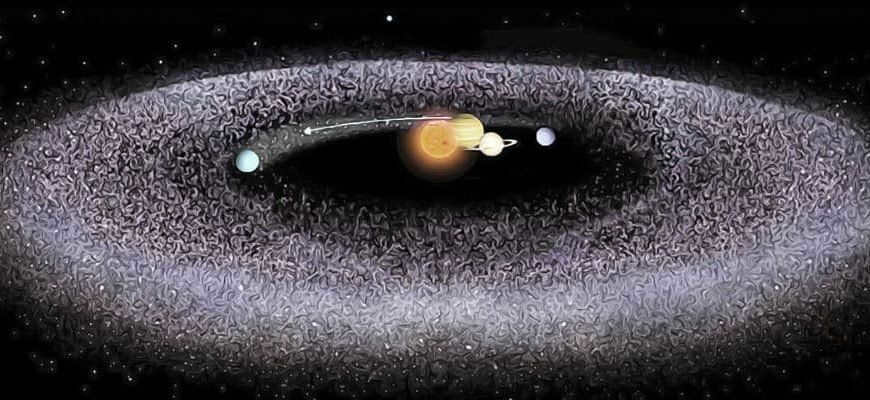
Did you realize that our solar system doesn’t just consist of the Sun and 8 planets? Any objects that are influenced by the gravitational pull of the Sun are also considered part of our star system. So, which celestial body within our star system is recognized as the most distant from our star?
Astronomers made an announcement a couple of years ago regarding the discovery of the farthest object ever observed in space. It was officially designated as 2018 AG37, but was given the nickname FarFarOut. This nickname is a loose translation meaning “even more distant” or “farther away”. FarFarOut is even more distant than another object called 2018 VG18, which was previously discovered and given the nickname FarOut.
FarOut is located in a very distant place
The Subaru and Gemini North (Mauna Kea, Hawaii) and Magallanes (Chile) telescopes played a crucial role in the discovery. By utilizing these advanced tools, astronomers were able to calculate that 2018 AG37 is situated 132 astronomical units apart from the Sun! In other words, it is positioned at a staggering distance of 19.8 billion kilometers from our beloved star! (To put this into perspective, consider that Neptune, the farthest planet in our solar system, is located 30 a.u. away from the Sun, which translates to approximately 4.5 billion kilometers).
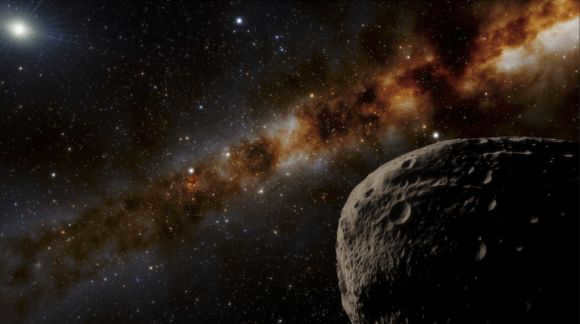
Farfarout was first detected in January 2018, however, determining its distance and approximate orbit proved to be a challenge for astronomers. Currently, the size of the celestial body is believed to be around 400 kilometers, although this measurement is particularly tricky to ascertain from Earth due to its dependence on the object’s brightness, or albedo. The discovery of Farfarout represents a remarkable technological achievement, as detecting such a tiny pebble from such a vast distance is nothing short of a miracle!
However, there is more to the story!
Certainly, the discovery of Farfaraut at a distance of 132 a.u. from the Sun does not imply that there is nothing located even further away. As a matter of fact, numerous trans-Neptunian objects (TNOs) that have already been detected have orbits with significantly greater distances from the Sun at aphelion. Take Sedna, for instance. Despite being initially spotted at a distance of 85 a.u. from the Sun, it has an aphelion of 937 a.u. That is much farther than Farfaraut’s estimated aphelion of 175 a.u. Currently, the record for the farthest object from the Sun is held by a space body designated as 2017 MB7. This object has a diameter of approximately 6 kilometers and an aphelion ranging from 7000 to 9000 a.u.!
On its own, 2017 MB7 was detected when it was significantly nearer to the Sun than Farfaraut. However, we are discussing two entirely distinct objects. While Farfaraut journeys a distance of “only” 175 astronomical units from the Sun and takes approximately a thousand years to complete an orbit around it, 2017 MB7 can venture as far as 9000 astronomical units away from the Sun. Additionally, its orbital period around our star exceeds 70,000 years!
What Lies Beyond?
The discovery of Farfaraut and other similar entities presents a unique opportunity to gain insight into the farthest reaches of our solar system, beyond the orbit of Neptune. In textbooks, this vast expanse of space is often simplistically described as the Kuiper belt, a disk-like region comprised of celestial bodies with stable orbits. However, it is important to note that these bodies possess highly elliptical orbits, with some even extending into the distant reaches of the Oort cloud. The innermost section of the Oort cloud is estimated to be approximately 2000 astronomical units (a.u.) away from the Sun.
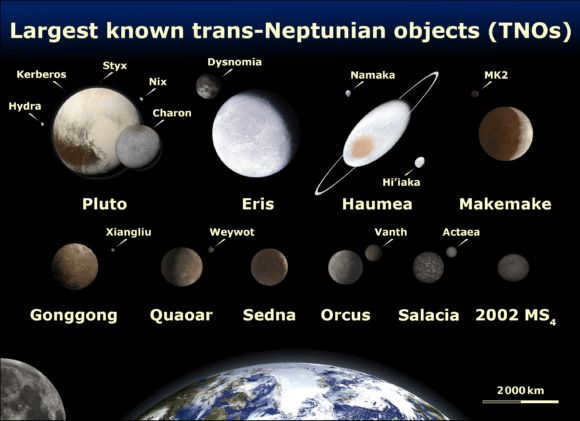
The majority of objects in the Kuiper belt lie within the range of 42 to 47 astronomical units (a.u.) from the Sun. The belt terminates rather abruptly at the 50 a.u. mark, which is commonly referred to as the “boundary” of the classical Kuiper belt.
To put it simply, Farfaraut is the most distant celestial body that has been discovered thus far. However, it should be noted that while this object is indeed quite far from the Sun, it is not the farthest.
The study of these enigmatic entities will undoubtedly contribute to our understanding of the formation of the solar system.
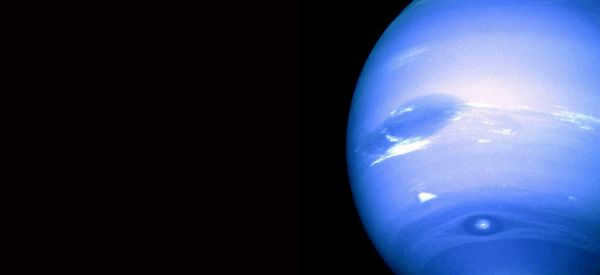
Neptune
A celestial body that is larger and orbits around a star is commonly referred to as a planet. The star that our planet orbits is known as the Sun. This article will discuss the farthest planet from the Sun in our solar system, including its name and characteristics.
Here are a few additional factors to consider when determining its classification as a planet:
- The ability to maintain a spherical orbit;
- Not being a satellite of another celestial body;
- Clearing its orbital path of other objects.
What is its name
What is the most distant planet from the sun? Prior to pondering this inquiry, it is imperative to acquaint ourselves with the concept of the composition of our system. Alongside the Earth, our solar system encompasses several other immense spherical entities:
- entities belonging to the Earth group (Mars, Earth, Venus, Mercury);
- colossal entities (Neptune, Uranus, Saturn, Jupiter);
- Pluto.
So which planet is the most distant from the Sun? Up until 2006, Pluto held that title. However, in that year, astronomers made the decision to exclude it from the planetary list. The reclassification of this celestial object occurred between 1979 and 1999 while it was orbiting around Neptune. There is a prevailing belief that this cosmic body is not truly part of our solar system. Hence, scientists now consider Neptune to be the farthest celestial body from the Sun. In conclusion, Neptune is the answer to the question of which planet is the most distant from the Sun.
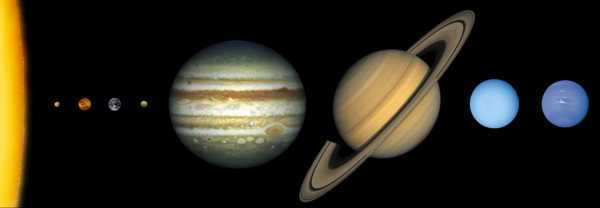
Order of the planets in our solar system
Unique characteristics of Neptune
Neptune is classified as a gas giant and is 17 times the size of Earth. It is located approximately 4,491.1 million kilometers away from the Sun. Due to its great distance from the Sun, Neptune receives only a fraction of the illumination that Earth receives, resulting in dim conditions. The distance between Neptune and our home planet is a staggering 5 trillion kilometers. Neptune also possesses several other distinctive features that are worth studying when considering which planet is the farthest from the Sun.
Given that the composition of this planet consists of over 20% hydrogen and helium, it has been given the moniker “icy”. A single day on Neptune is equivalent to 16 hours, and a complete orbit takes a lengthy 164 years. Consequently, a single season on Neptune lasts 41 years according to Earth’s standards. According to scientists, the first revolution was completed in 2011.
On the surface of this celestial body, powerful winds blow, and the local atmosphere maintains an average temperature of -214 degrees Celsius. Neptune possesses its own source of heat, as it produces more energy than it consumes. Additionally, Neptune is adorned with 5 rings comprised of carbon and ice particles.
The planet that is farthest from the Sun has a remarkable number of satellites, totaling 14. Within the scientific community, these satellites are typically categorized into different groups:
- Inner satellites (known as Naiad, Thalassa, Galatea, Larissa, etc.) are composed of rocky formations with irregular shapes. They have a diameter of approximately 200 km and rotate at high speeds.
- Separately positioned satellites (such as Triton, which has a diameter of 3000 km and is composed of ice, with a rotation period of 6 days, and Nereid, which has an irregular shape and completes one orbit around the planet in 1 Earth year).
- The unnamed outer objects are located millions of kilometers away from the cosmic body in question, with the farthest one completing a 25-year orbit around it.
While the definition of the farthest planet from the Sun has evolved over time, it is now universally recognized as Neptune.
Interesting facts about the most distant celestial body from the star
What is the planet that is farthest from the sun? Without a doubt, it is Neptune. The history of this particular planet holds numerous intriguing details that should be taken into account when studying astronomical science:
- Due to its significant distance, the sun appears as a star rather than a disk when observed from Neptune’s surface;
- Neptune is the answer to the question of which planet is farthest from the sun, where perpetual twilight prevails due to low levels of light (although it has 525 times more light than the Earth during a Full Moon);
- Neptune’s diameter is 3.9 times larger than that of Earth, and its mass is 17.2 times greater;
- The orbit of Neptune around our celestial star is circular, and it takes approximately 164.8 Earth years to complete one revolution;
- The planet’s density is 1.5 times greater than that of water;
- The planet has a total of 5 rings, composed of small dust particles, with two being bright and three being fainter;
- The planet’s discovery was initially made through calculations, but it was previously believed to be the farthest planet from the Sun for many centuries. In 1846, another celestial body was discovered with the help of a telescope;
- The planet completes one revolution in a time interval of 16.11 hours;
- The planet’s atmosphere contains methane molecules, which have a strong ability to absorb red rays. As a result, the planet’s disk appears bright blue in color. The atmosphere is primarily composed of helium (31%), methane (2%), and hydrogen (67%);
- Neptune, being the farthest planet from the Sun, is followed by which celestial body? answer: None of the planets within our solar system is located farther away, as Pluto lost its planetary status in 2006. Consequently, Neptune holds the record for being the farthest spherical object from the Sun.
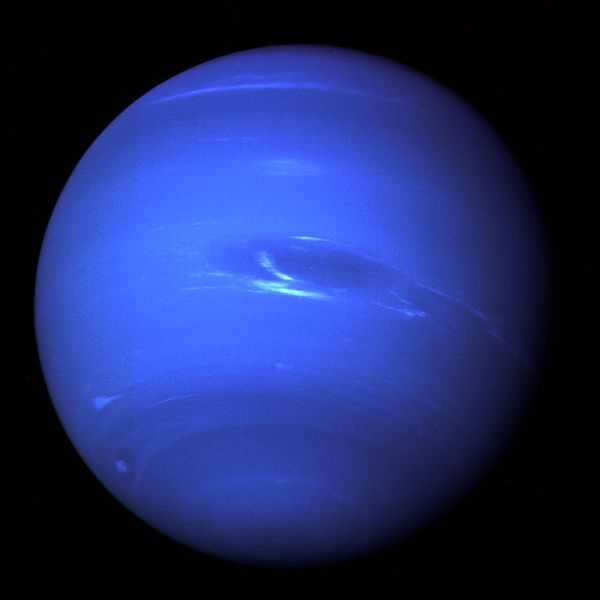
Despite its lack of distinction in terms of size among the planets, Neptune boasts a greater mass than Uranus. Observing this planet presents a challenge, as one is unlikely to see anything more than a small disc. A telescope is not necessary for such an observation; a pair of binoculars will suffice. The planet’s ring is completely invisible from Earth. Furthermore, only the Voyager-2 space satellite has successfully reached this distant planet. No other spacecraft has replicated its achievement.
Basic details about Neptune
Neptune is positioned approximately 30 astronomical units away from the Sun, with a diameter of nearly 50,000 kilometers. To put it differently, this celestial body has a mass equivalent to that of 17 Earths! Its orbital period around the Sun spans almost 165 years, and it maintains an average temperature of 55 Kelvin.
According to legend, Neptune acquired its moniker due to its distinct blue hue. It is widely believed that blue is closely associated with the vast bodies of water found in seas and oceans. As Neptune is revered as the god of the sea, the planet was named in his honor.
The incredible finding of Neptune
Neptune and Triton, captured by the powerful Hubble telescope
When scientists made the groundbreaking discovery of the seventh planet Uranus, they couldn’t help but notice something peculiar about its behavior. Its orbit defied the laws of Newton and exhibited strange patterns. This led the scientists to theorize the existence of another planet, lurking beyond Uranus, exerting its gravitational pull and altering its orbit. Armed with the available data, astronomers meticulously calculated the approximate position of this mysterious planet. Their assumptions turned out to be correct, unveiling the awe-inspiring beauty of Neptune. This remarkable achievement in computational astronomy was unprecedented and surpassed all expectations.
Images of Neptune in the infrared taken by the Keck telescope
The composition of the planet closely resembles that of uranium, with both planets being predominantly composed of ice and solidified gases, along with a small amount of hydrogen and helium. The core of Neptune is believed to have a mass similar to that of Earth.
Neptune falls under the category of gas planets, resulting in frequent tornadoes, storms, and wind streaks. The winds on Neptune can reach speeds of up to 650 m/s! In addition to receiving heat from the Sun, Neptune also generates internal heat, which is more than twice the amount produced by the Sun.


